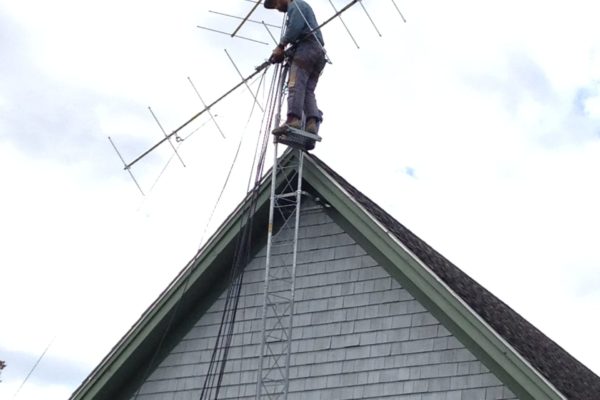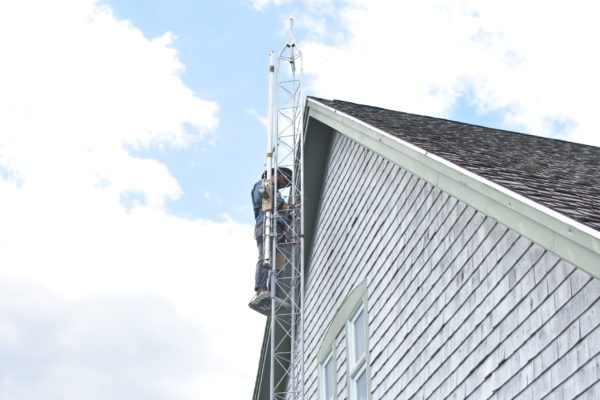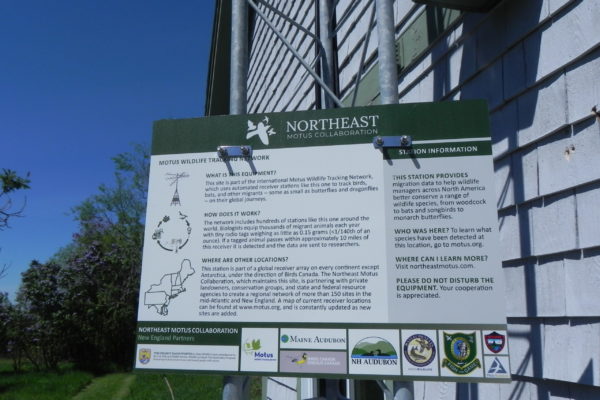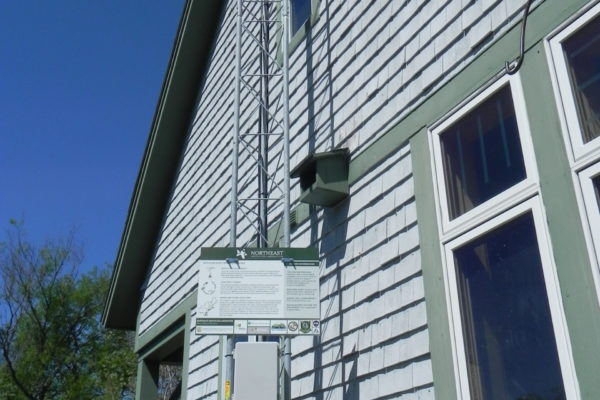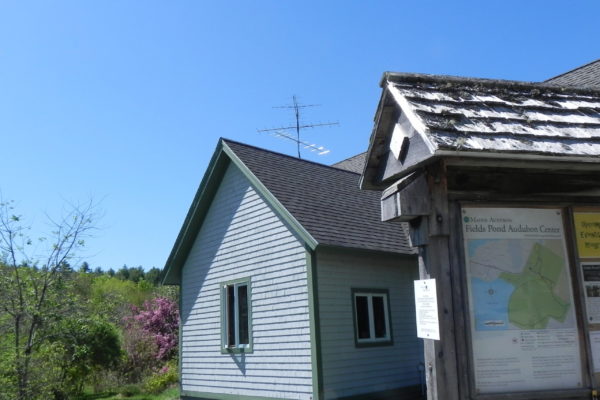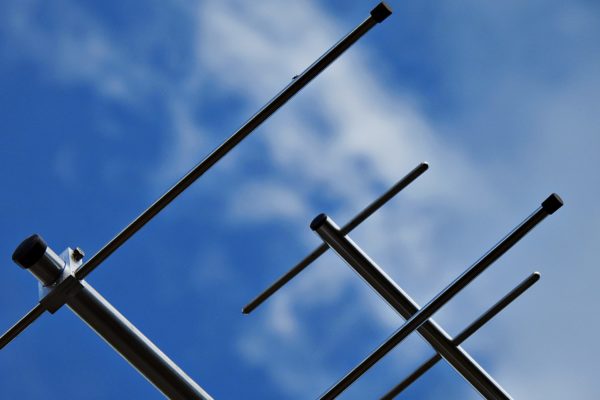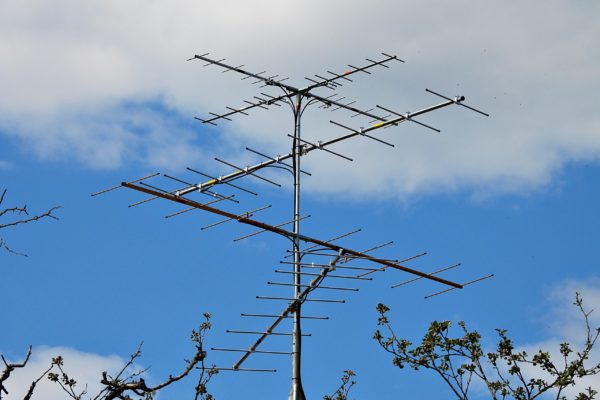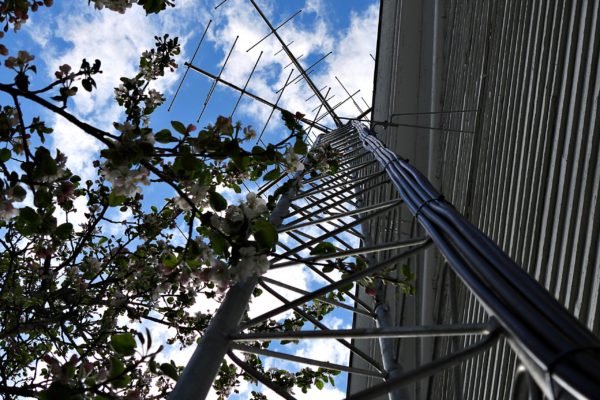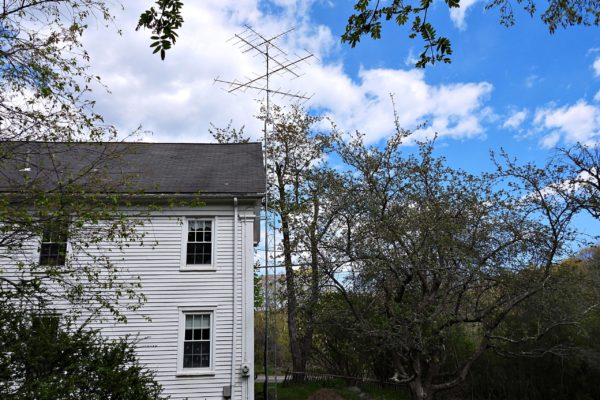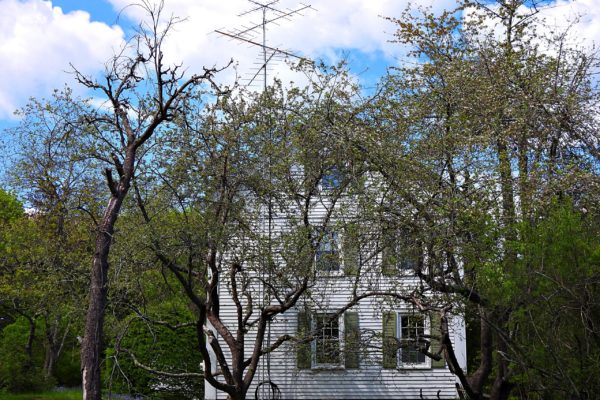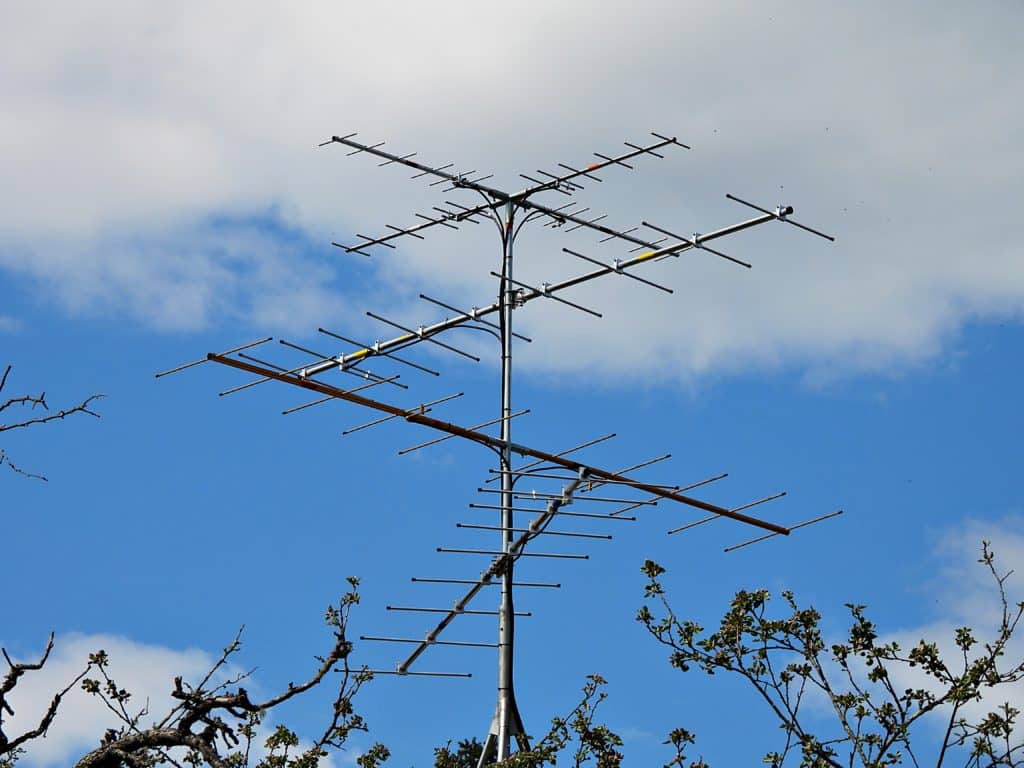
Maine Audubon is joining a massive international effort to track animal movements through automated radio telemetry, a project called the Motus Wildlife Tracking Network. It’s already teaching us new things about how birds and other animals are moving through Maine.
Motus, from the Latin for “movement,” seeks to track species migration via a collaborative network of antenna towers which pick up the “pings” of animals fitted with special transponders. The more antennas in the network, the better chance they’ll have of picking up a ping, and the more information available to scientists. Maine Audubon is joining the effort by installing antennas at its Fields Pond Audubon Center in Holden and Hamilton Audubon Sanctuary in West Bath.
Maine Audubon is excited to be a partner in the Northeast Motus Collaboration that is siting and installing 50 Motus receiving stations across New England, complementing the 45 stations recently installed in the Mid-Atlantic region. In addition to the Northeast and Mid-Atlantic towers, Motus towers are also being erected as far south as Costa Rica, to track long-distance movements of some of our migratory birds.
The two Motus towers that were installed on buildings at Fields Pond Audubon Center and Hamilton Audubon Sanctuary in May look like old-fashioned TV antennas, are connected to electricity and the Internet on site, and rise about 35 feet high (other towers are free-standing and solar powered). Each has four antennae that point in different directions, designed to capture movement from various locations.
In addition to the two at Audubon sanctuaries, we are partnering with the Western Foothills Land Trust, Bates College, Downeast Lakes Land Trust, Hirundo Wildlife Refuge, and potentially Saddleback Mountain to erect towers on their properties in 2021. Up to 14 towers will be installed in Maine, with more sites to be identified and secured in 2022.
The Northeast Motus Collaboration was formed in 2017, and receives funding from the U.S. Fish and Wildlife Service’s Competitive State Wildlife Grants program. Other members of the New England Motus Project include New Hampshire Audubon, Massachusetts Audubon, the Willistown (PA) Conservation Trust, and the Carnegie Museum of Natural History. The New Hampshire Fish and Game Department is the lead agency and the Maine, Massachusetts, and Pennsylvania wildlife agencies are partners. Matching funds for the towers, a requirement of the grant, are coming from the Maine Outdoor Heritage Fund (Fields Pond) and a gift in honor of Claire Wilson DePalma (Hamilton) to advance science and education through this state, regional, and global initiative to track migratory birds, bats, and insects.
A map of current receiver locations can be found at motus.org; it gets updated as new sites are added. FMI: northeastmotus.com.
Note: This piece is adapted from an article about Motus, Maine researchers using Motus data, and projects using data collected at Maine Audubon, that appears in the Summer issue of Habitat, the quarterly magazine mailed to all Maine Audubon members. Not a member? Join now!

